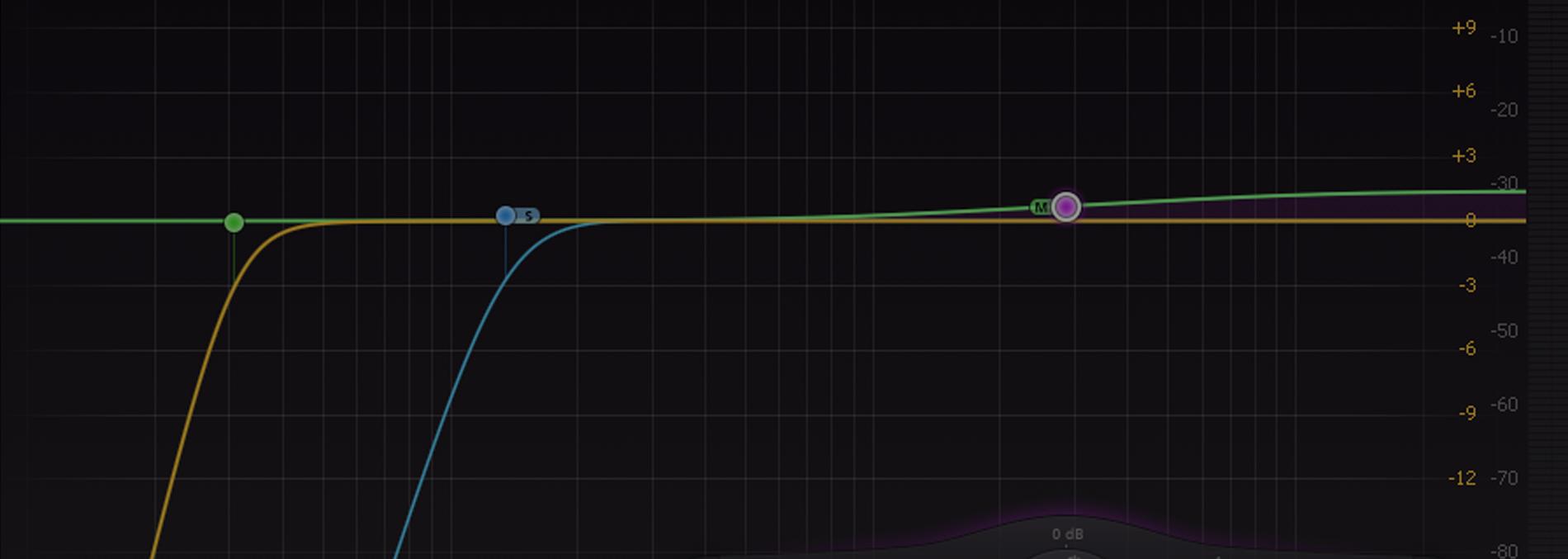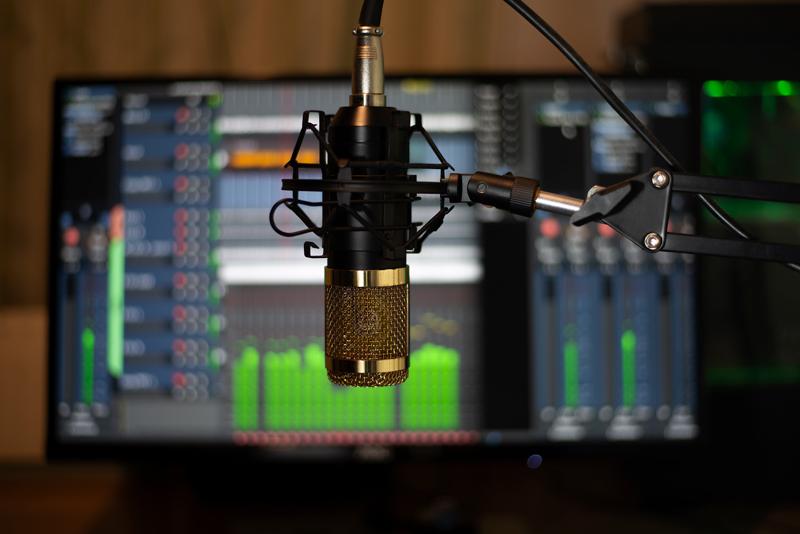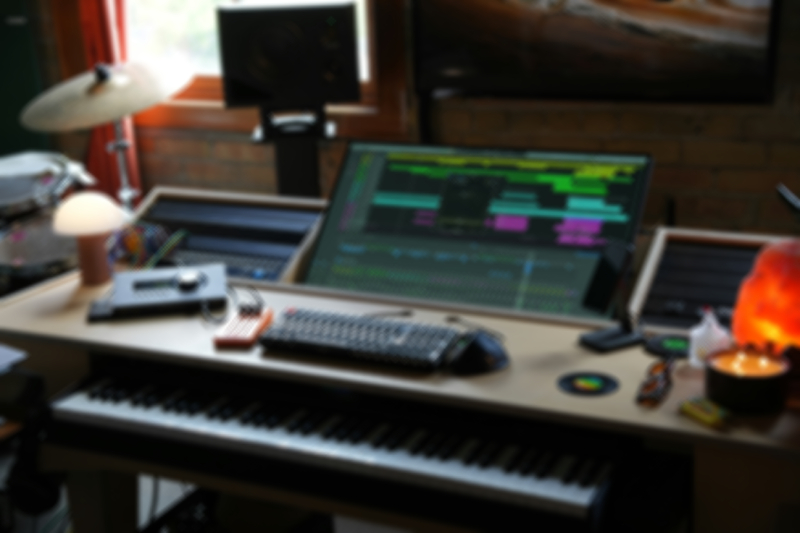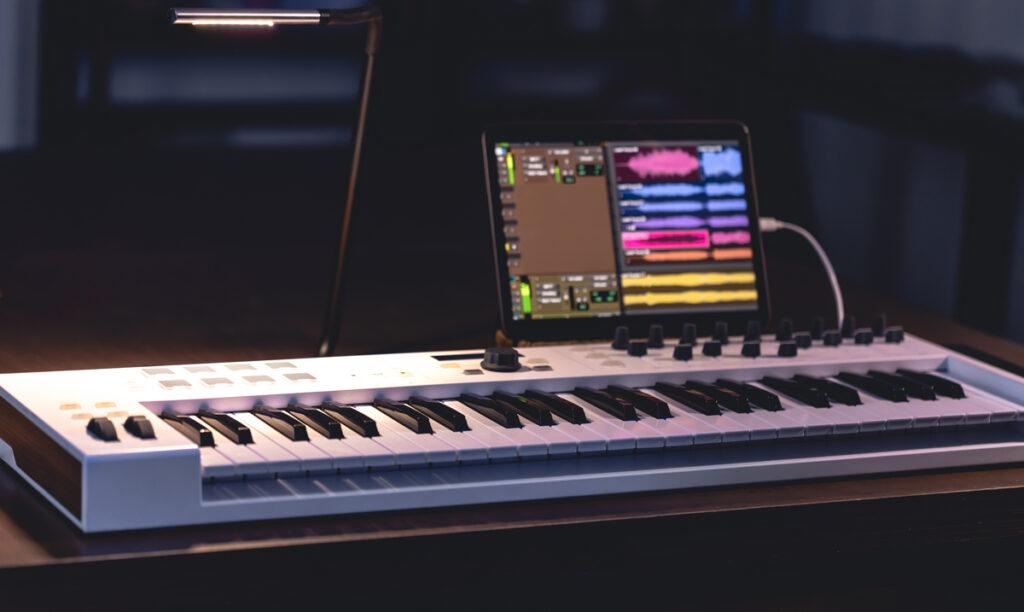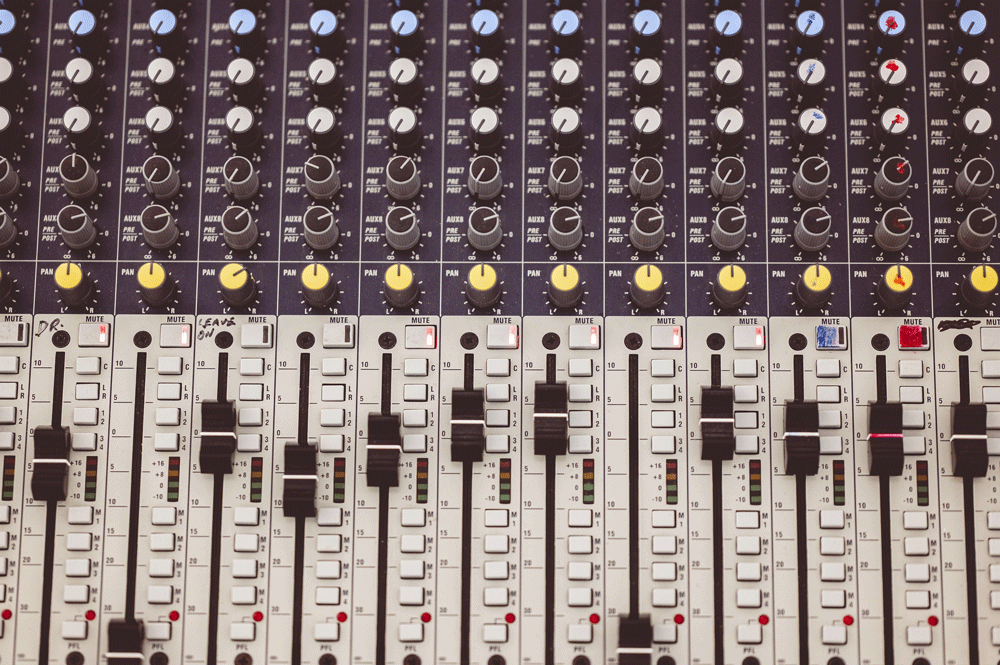In this article, we’ll talk about what Mid Side channels are and why we use Mid-Side processing while mixing and mastering. In relation to that, we’ll explain the notion of stereo width. You’ll understand the basis of Mid-Side processing and why it is used for making stereo wider.
Stereo sound can be represented in two ways. First you know, it’s standard Left and Right channels. There is also an alternative way to work with a stereo recording, viewing it as Mid Side.
Mid is the channel that represents the sum of the left and right channels.
Mid = L + R
The Side channel is the difference between the Left and Right channels. Actually, it’s the sum of Left and phase-reversed Right. That is, only the sounds that are unique for the Left or the Right channel are present in the Side channel.
Side = L + Phase-reversed R
When the Mid/Side decoding is carried out in a stereo system, the Side channel is sent both to the left and right speakers, only to the right speaker it goes with a 180-degree reversed phase. At the same time, the Mid channel is fed to both left and right speakers identically.
This is how Mid/Side decoding is represented by an equation:
Mid+Side = M+S = L+R+L-R = 2L
Mid+ inverted Side = M+(-S) = M-S = L+R-(L-R) = L+R-L+R = 2R
Look at the picture to see what the inversion of a signal (reversed phase) looks like.
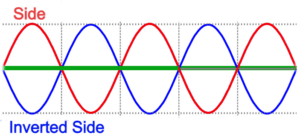
By the way, the green line represents the sum of the signal and its inversion, that is equal to 0. Technically speaking, the zero sum of the phase-reversed waves can be illustrated by feeding them into one speaker. The speaker membrane moves with the waves producing the sound, but it can not move in the opposite directions at the same time following two opposite waves. Hence, when two opposite waves affect the speaker membrane simultaneousely, it stays calm and produces no sound. The sum of the waves is zero. Similar mutual cancellation happens to opposite sound waves wherever they interfere with each other. By the same reason, when we listen to audio in mono, there will be no Side channel present, because it’ll cancel itself as shown in the picture.
We can listen to the Mid/Side encoding of a file the same way as to the L/R format, it’s the same stereo audio file, only represented differently.
Let’s look at the example.
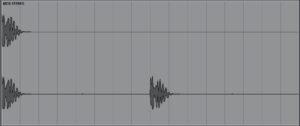
Here’s a piece of audio. At the very beginning, we have KICK DRUM which is in the center of the panorama. The second hit is panned 100 percent RIGHT
I will now use the S1 MS Matrix plugin from Waves. This decoder splits the stereo sound into Mid and Side channels.
As the output, we’ll get the following:
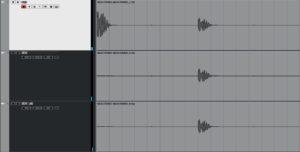
Here we see the Mid channel, the Side, and the inverted Side. The first kick, which is in the center of the stereo image, stays in the Mid channel and is not present in the Side. But the second kick that is panned to the right is present in the Side channel.
When the Mid/Side representation of a stereo is played in a stereo system, we use this equation backwards:
2L=Mid+Side
2R=Mid+ inverted Side
It means that to the left speaker goes Mid and Side, and to the right speaker goes Mid and inverted Side
So we’ll again, listening to this stereo, have the first kick sound in the center, but the second on the right.
Mid/Side technique and the stereo width
Then why do we need Mid/Side technique? There is a practical reason, this representation clearly shows stereo width and helps to work with it. Particularly, the Side channel represents the width of the stereo. The louder the Side, the wider the sound, it’s that simple. So, Mid/Side technique gives us a clear picture of how wide the sound is.
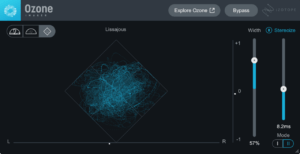 The Vectorscope and Correlation Meter can be used to control the volume of the SIDE channel.
The Vectorscope and Correlation Meter can be used to control the volume of the SIDE channel.
In this case, the Vectorscope is in the middle in the form of a 2D picture of a stereo image, and the Correlometer is on the right. It has gradation from -1 to +1, where +1 is a completely mono sound (Mid and no Side), and 0 value shows that sounds have been 100% pan-normalized to either side, but without the use of audio expander plugins (Side is the same as Mid). A perfect stereo mix has this value somewhere between 1 and 0, showing the perfect balance between Mid and Side channels.
However, if the value falls in the negative span, it means that the Left and Right channels contain some amount of identical but phase-reversed waves. This often happens because of the use of stereo expander plugins. Usually, these algorithms work with the Side and increase its loudness in the process. Then what happens is, both channels will contain an extra boosted part of the Side channel. This will increase the perceived width of the stereo, but when Left and Right channels are joined together, for example when someone is listening to your stereo track using a mono playback device or is standing at some distance from the speakers, those extra boosts will eliminate each other, leaving the signal quieter and weaker than the stereo was.
Want a free test mix of your track?
We get it.
That’s why we’ll do a full hybrid (analog + digital) mix of your song —
for free.
No upfront payment. No risk.
You only pay if you’re blown away. And if you are, we’ll slash 40% off the final price.
Nobody else in mixing and mastering offers this.
Why?
Because most studios say yes to every project. We don’t. We only mix what we’re excited about — so send us your best track. If we like it, we’ll mix it like it’s going to the Grammys.
👉 Just drop your name and email to get started.
Plugins that work with Mid/Side encoding
Mid/Side encoding has many useful applications. Applying different effects to only Mid or Side channels, for example, using Mid-Side EQ, you will be able to work with the center of the mix or with its sides, affecting directly the stereo width. Of course, these tools must be applied after all the panning is done and you like how all the instruments and vocals are spread around the stereo image.
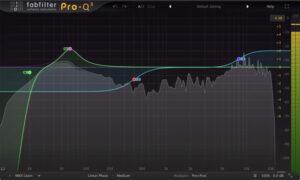 One can use the following types of Mid-Side processing:
One can use the following types of Mid-Side processing:
- Mid-Side EQ – an equalizer that makes it possible to process the Mid and Side frequencies separately
- Mid-Side Compression – allows compressing the channels separately. It is used not so often by audio engineers, but it might be worth trying out
- Stereo enhancer / imager – changes the balance between Mid and Side
If the sound is greatly expanded with the help of a stereo enhancer, as we said earlier, the stereo audio output will contain a very loud Side channel compared to Mid. And since the Side channel will be present in the opposite phases in the Left and Right, when Left and Right are joined together in mono, the song will become much quieter or, in extreme cases, you would barely hear it because the Side was artificially enhanced so much. And this what your listeners will hear when using a mono playback device or when standing at some distance from the speakers, you don’t want this to happen. Keep this in mind when applying any stereo expansion methods and make sure there’s no phase issues between Left and Right channels.
Now, as you learned all you need to know about Mid/Side encoding, you are ready to continue reading our article How to create a wide stereo.

